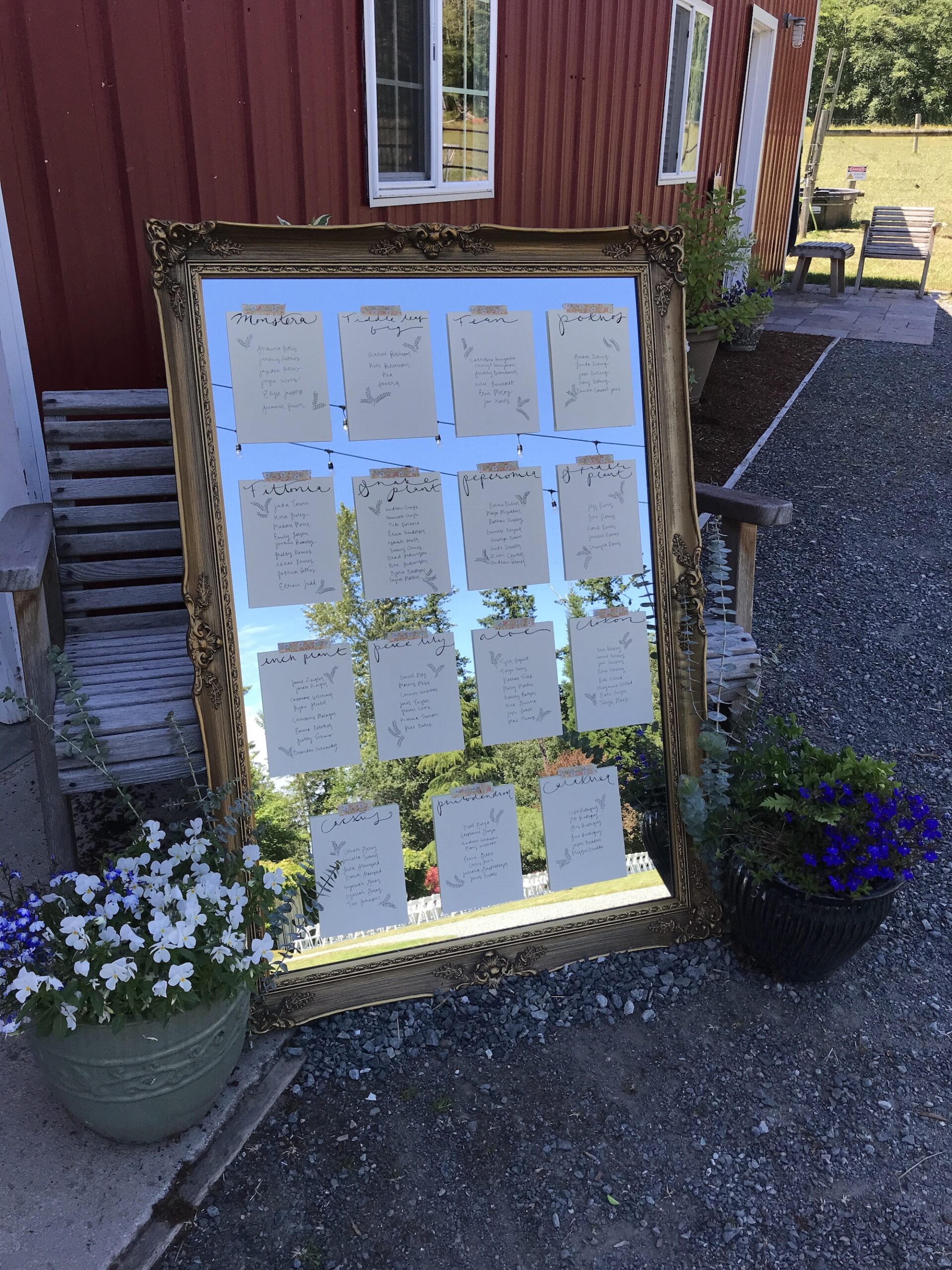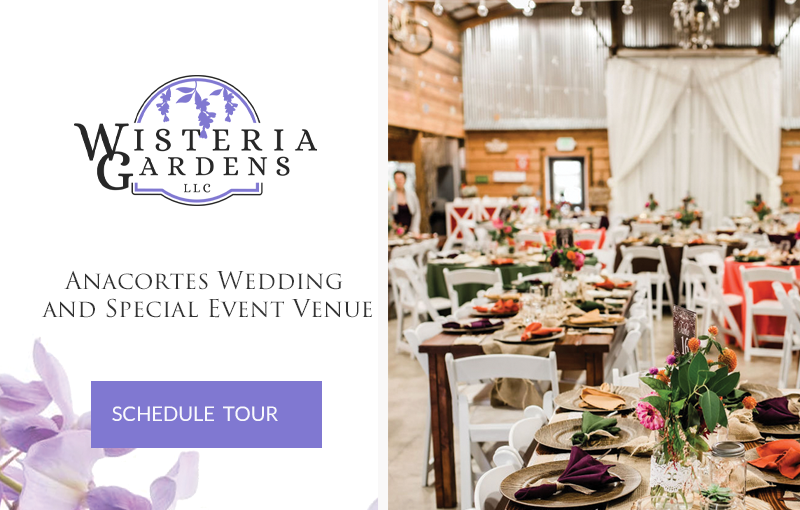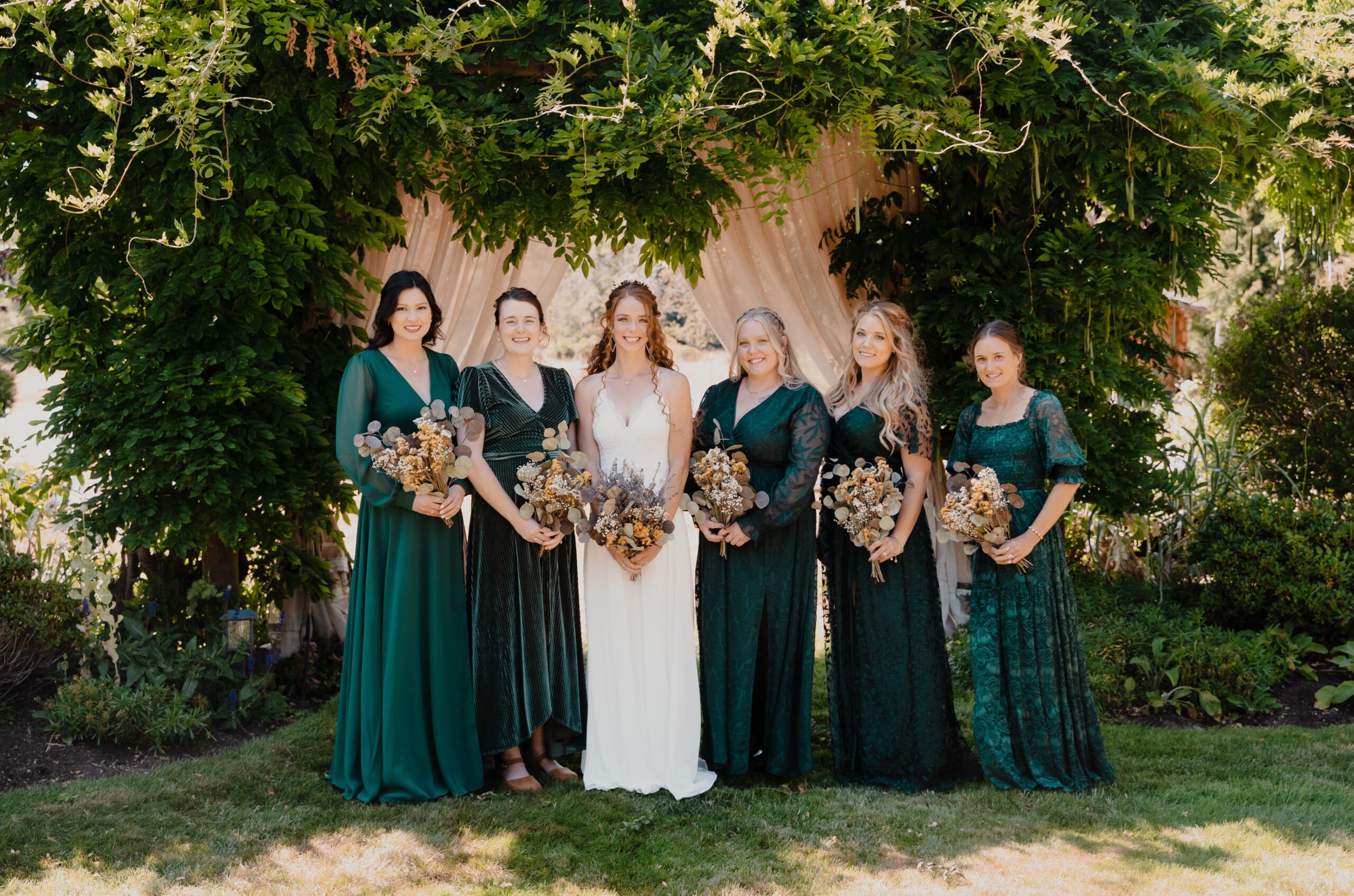It’s your big day, and you’re excited to have all your friends and family celebrate with you. The task of creating the seating chart for your reception may seem overwhelming, but it doesn’t have to be. Here are some simple guidelines for making this part of the planning as easy as possible!
Gather The Guest List First
First and most importantly, ensure your guest list is accurate and organized. You’ve probably gathered names from both sets of parents and each other, and you’ll want to establish groups of guests that make the most sense. We suggest you start with groups like immediate family, extended family, friends, and colleagues. Sometimes this may vary, for example close friends can be considered as extended family. But this is a good place to start and it will be helpful to organize seating based on people who have relationships with each other and most likely common interests.
Play With The Space
Once you’ve grouped your guests into smaller, easier-to-manage categories, work with your space. Having a layout of your venue is a helpful way for you to really get a clear vision. Wisteria Gardens offers a to-scale floor plan of our event barn with paper cutouts of our tables that you can use to be creative and try out a variety of designs.
When you visualize the space, consider how to arrange the tables, leaving room for the dance floor, cake table, and other important elements. A layout can also help you catch any potential conflicts in the space when you’re thinking about florals and other items you might want to incorporate.
Once you’ve got something to work with, it’s time to start designing. You’ll need to consider whether you want round or rectangular tables or perhaps a mix. Much of that will also depend on the venue, what size tables they offer and how many guests can fit at each table. Make sure you are considering guest comfort and the overall flow of the reception. The goal is to create a layout that will encourage your guests to interact with each other, move comfortably in the space, and have a good line of sight to the important elements of your reception—the head table, dance floor, as well as food and beverage areas.
To Assign Or Not To Assign: Is Open Seating An Option?
It used to be that assigned seating was a must for receptions, but more and more couples are choosing to allow guests to choose their own seats in an open seating style. There are some pros and cons for both.
When implementing assigned seating, you can be sure that each guest has been carefully considered and is likely sitting with someone they will enjoy talking and interacting with. One challenge is that this can take a lot of time and effort on your part especially if you have a large guest list. Last minute RSVPs can create disruption to your plan as well.
An open seating style will relieve some pressure off of you during those final weeks of planning and your guests will have flexibility as to who they sit with. However, it has the potential for some awkwardness or confusion as they determine where their seat will be for the remainder of the event.
 Some couples have used a hybrid approach—they will assign certain tables to groups of specific people—grandparents, cousins, close friends, special needs, etc. but allow them to choose their specific seats at those tables.
Some couples have used a hybrid approach—they will assign certain tables to groups of specific people—grandparents, cousins, close friends, special needs, etc. but allow them to choose their specific seats at those tables.
One final thing to consider when deciding between open or assigned seating is the quantity of tables. When you use assigned seating, this is more accurate and easier to estimate. If you decide on open seating, you will probably need to plan for an extra table or two. With open seating, guests don’t tend to fill seats at tables completely. Seven people might take seats at a table of eight, and it is highly unlikely that a single person will plop down at an established table. Providing extra seats for the potential spread out of your guests is a good idea.
Both approaches have their benefits and can also be a reflection of your personality and your thoughtfulness of who is attending. Guests are coming to celebrate you and this joyous event! They’ll be happy to do so wherever they are sitting!
Lay It Out
Once you’ve decided what seating approach you will use, start placing the specialty tables first. Obviously, as the bride and groom, a central location where you can easily connect with your guests will be optimal. Key family members like parents, grandparents, and other family ‘VIPs’ may need to be seated/placed with more direct access or line of sight to your head table. An insider secret to encouraging a lively environment is to place younger adults around the dance floor as they’re typically the first to get up and get the party started when it comes time for dancing!
Can We All Get Along?
Planning your wedding seating can sometimes be stressful when taking relationships and their dynamics into account. You have been blessed with a wide variety of people in your lives but sometimes there may be conflict and strain between them. Divorced parents are one example. It may be in your best interest to be strategic when planning where they might sit but remember it is ultimately their responsibility to make the effort to be cordial with one another for a few hours to celebrate this special day with you. You will need to determine the best approach to achieve the least possibility of frustration.
Something else to think about is the potential of helping new love bloom! So often, single friends or family members meet significant others at weddings. You could decide to provide a little nudge in that direction for some of your guests depending on how you set a seating chart. Who knows what new relationships might be formed!
Have A Backup Plan For Your Backup Plan
Your plans may change, your guest list may change and those changes may happen right up to the minute you walk down the aisle. Preparing in advance for last-minute adjustments will help you take the unexpected in stride. Having a flexible or spacious seating chart that can be added to, changed or rearranged is helpful, as are escort cards or a seating chart display that can also be easily adjusted. Our biggest piece of advice is to include a table or two for those who RSVPd late, showed up unexpectedly or brought a plus one that was unaccounted for. It happens, and having a backup plan that considers those possibilities will take your stress away and allow you to graciously accommodate for any surprises.
Creating your wedding seating chart is an important part of wedding planning, but it doesn’t have to overwhelm you. In fact, it should re-assure you that you’ve done your part to set your big day up for success and all you need to do now is celebrate! So, get your guest list organized, lay out your plans and put some thought into the relationship dynamics of those on your guest list. You’ll create a wedding celebration that people will speak of for years to come!
If you would like to learn more about Wisteria Gardens for you big day, get in touch!





